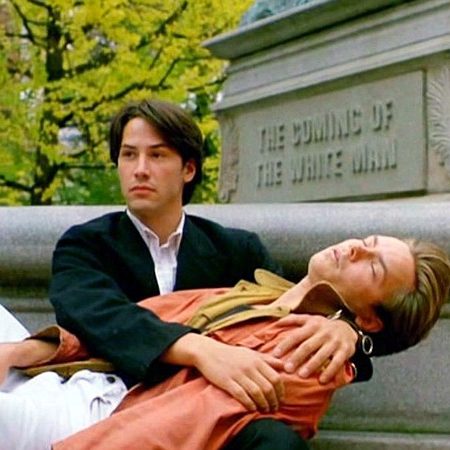As Republican super PACS prepare to Brylcreem candidates who babble about liberty and marauding Mexican invaders, yet another biography about the greatest leader in world history emerges from a reputable publishing house. But H.W. Brands, who distinguished himself with molding fine FDR and U.S. Grant bricks in 2008 and 2012, respectively, emerges no less stunned and stunted by the Sage of Dixon than Edmund Morris at century’s end did but quite a bit more hornswaggled. Pace, an absence of jargon, and scrutiny of the supporting cast keep Reagan lively. New facts are rare. One of those known facts concerns the fortieth president’s intellectual lassitude, unwillingness to question subordinates, and a fealty to communist-free plutocracy so thorough that he fell prey to every free market bozo, Central American caudillo, and paramilitary moron in Jim Baker’s appointment book. Brands’ own lassitude is almost as thorough.
Readers for whom the interaction of personages makes history will enjoy Reagan. Sentence for sentence this book has less whiz-bang and flaccid insights than Bob Woodward’s stenographic efforts. But Reagan synthesizes—it doesn’t analyze. Reading this biography saves one the trouble of perusing the memoirs of Alexander Haig, George Schultz, Robert McFarlane, and other figures, minor and major, whose tell-alls sink used bookstore shelves. Its focus on Reagan’s diaries, published in the late 2000s, adduces a president in command of his administration, quick to anger when required but sober about weighing pros and cons; he emerges as a president.
Now, I’ve read those diaries, and while they reveal a monarch who grasped the subtleties of serving as head of state, they also glaze the eyes with the unrelenting vapidity of the observations, canned patriotism, coy language: legal and international phenomena buried in leather. Wedded to momentum, Brands shows little interest in consequences. What Gramm-Latta in 1981 did to school lunch programs and the effects of “simplifying” the tax code in 1986 did to eviscerate the middle class gets scant attention; the delicious anecdote is his governing principle. Brands would rather recount the familiar story of OMB director David Stockman’s abasement before a damp-eyed Reagan after admitting to an Atlantic Monthly reporter the loophole-dotted racket that was the ’81 budget; or of the misadventures of Donald Regan, the president’s hapless second term chief of staff who exploited Reagan’s mental torpor to run the West Wing like a Wall Street boardroom and, naturally, became the Beltway press corps’ scapegoat when the Iran-Contra story broke.
The tome does boast two deviations from Prayer to Saint Ron. The first is a an impressive sifting through documents showing that Reagan campaign manager and former spook William Casey skulked through Spain “for purposes unknown” in the summer of 1980 at the same time as Iranians who later said they would release the American hostages after the 1980 election. Adding to the suspicious pattern was the George H.W. Bush administration’s reluctance to surrender any paper related to that period; FOIA requests in the intervening years have taken care of the rest. The world learned the results in November 1980, including the subsequent appointment of Casey as, what else, director of the CIA (he was distraught when he didn’t get the State Department). How this felonious and deplorable chain of events presaged the malfeasance perpetuated by Casey, McFarlane, Poindexter, Oliver North, and others is unremarked on by Brands, nor are the number of creeps and quasi-fascists with West Wing access (the absurd Al Haig, fired in 1982, was said to have growled to Reagan about Cuba, “Give me the word, give me the word and I’ll turn that island into a fucking parking lot”).
The second deviation: the inclusion of generous excerpts from the Reagan-Gorbachev duels in Geneva and Reykjavik without much comment, showing a nimbler president than expected, worth the credit that the sycophants lavish. As James Mann’s The Rebellion of Ronald Reagan documented, the president by this point had to fight leaks from Cabinet officers like Caspar Weinberger and the bitching from footstools like George Will for the apostasy of believing that the threat of nuclear war wasn’t worth American posturing.
El Salvador, playing coy with Botha’s apartheid regime in South Africa, Ed Meese’s conflicts of interest — they get paragraphs and in the case of Grenada a few pages because there was shooting and skullduggery and flags and things (a retired and less demented Haig said the Provincetown police department could have handled the invasion better). Meanwhile the banalities quietly fall, a grey drizzle. And the wrongness. In 1972, Nixon seemed “formidable” because of “his shrewd maneuvering between liberals and conservatives and his clever conduct of American diplomacy.” Bill Clinton defeated George Bush “aided by the wild card and sometimes wild-eyed candidacy of Texas billionaire Ross Perot.” For all his research Brands doesn’t seem to have an article that challenges Beltway clichés. To find credible critical biographies, look to Lou Cannon’s President Reagan: The Role of a Lifetime and Morris’ batty and ridiculed Dutch; even Steven F. Hayward’s two-volume special manages to situate Reagan in the conservative ferment in ways that anticipate Rick Perlstein’s The Invisible Bridge. Instead of reading H.W. Brands’ book, study the included photographs. They show depth of field, personality, and texture.

